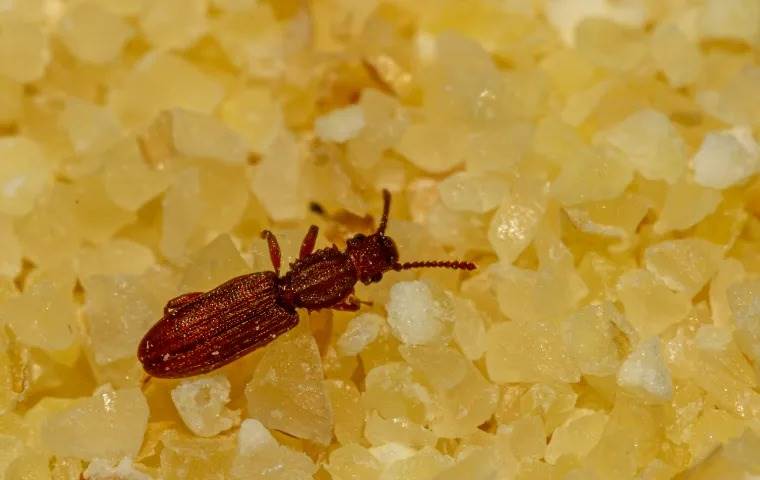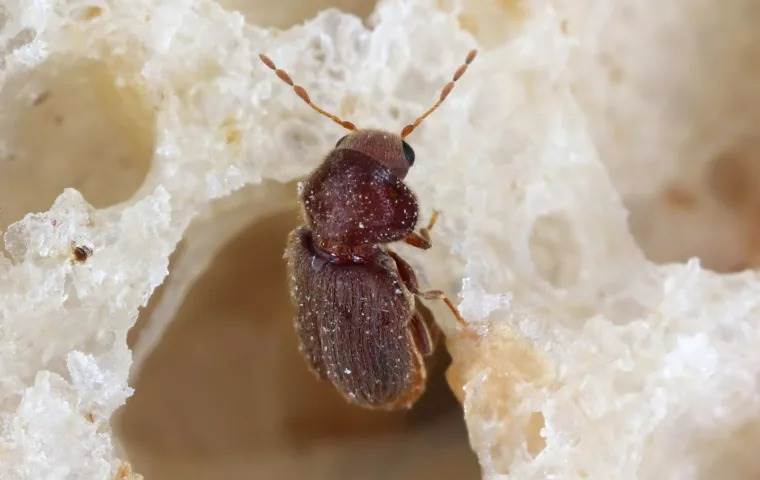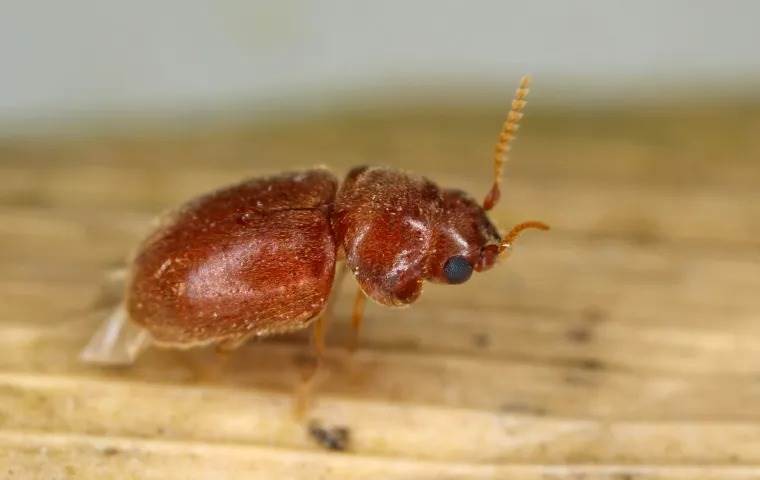Unwelcome Dinner Guests: How to Get Rid of Pantry Bugs for Good
Pantry bugs are a nightmare for any homeowner. These tiny critters can quickly turn your kitchen into their buffet, contaminating stored food with larvae, webbing, and droppings. If left unchecked, an infestation can spread from food packages to every corner of your pantry, putting your grain products, dried food, and food items at risk.
The best way to eliminate these pantry pests is to act fast. This step-by-step guide will help you remove pantry bugs for good and prevent them from returning.
Key Takeaways
- Pantry pests like weevils, meal moths, and beetles invade dry goods and spread fast inside food storage areas.
- A careful inspection, removal of infested food, and deep cleaning of shelves help eliminate pantry bugs effectively.
- Airtight containers, bay leaves, diatomaceous earth, and essential oils keep pantry pests from returning to stored food.
- Routine grocery checks, early detection of signs, and professional pest control ensure long-term protection from infestations.
1. Identify the Pantry Pests
Pantry pests come in different types, but they all have one thing in common—they infest various food sources and multiply fast.
Below are some of the most common ones and what they typically infest.
Most Common Pantry Pests | Description |
Rice Weevils | Small, reddish-brown beetles in rice, wheat, and corn. |
Indian Meal Moths | Pantry moths that leave webbing in cereal, dried fruit, and birdseed. |
Red Flour Beetles | Tiny reddish-brown beetles that infest grain products and pantry items. |
Confused Flour Beetles | Slightly darker than red flour beetles, they invade flour and dry goods. |
Sawtoothed Grain Beetles | Small, flat beetles that target grocery store staples like cereal, flour, and dried food. |
Merchant Grain Beetles | Similar to sawtoothed grain beetles, these pests infest food storage containers. |
Drugstore Beetles | Small beetles that infest spices, pet, and dry food products. |
Cigarette Beetles | Pests that target tobacco, dried herbs, and pantry items. |
2. Inspect and Discard Infested Food
Go through your pantry and check everything, especially flour, rice, pasta, dried fruit, nuts, cereal, and baking ingredients.
Don’t forget pet food and bird seed, as pests can hide there too.
If you see any bugs, webbing, larvae, or droppings, throw the food away immediately. Seal it in a plastic bag before tossing it to keep the infestation from spreading.
3. Deep Clean Your Pantry Shelves
Now that the infested food is gone, it’s time to clean.
Start by vacuuming your pantry shelves and crevices to pick up any leftover crumbs, droppings, or hidden bugs. Then, scrub everything down with soapy water, making sure to get into the corners and around door seals.
To get rid of any lingering larvae or bacteria, wipe the shelves with a bleach or vinegar solution. Check behind shelves and inside plastic bags or opened packages for any webbing.
Once everything is dry, you can safely put your food items back.
4. Store Food in Airtight Containers
To keep pantry pests from coming back, move your dry goods into airtight containers.
Use plastic containers with tight lids, glass jars with rubber seals, or heavy-duty plastic bags—anything that keeps bugs out. Thin food packages won’t stop pests, but a sealed container will.
5. Use Natural and Preventative Methods
A few simple natural pest control tricks can help keep pantry pests from coming back.
Try placing bay leaves in food storage areas or inside containers of grain products. Then, lightly dust shelves with diatomaceous earth to eliminate any lingering pests.
You can also wipe down surfaces with diluted essential oils like peppermint or eucalyptus—both work as natural deterrents.
6. Monitor for Signs of Infestation
Even after cleaning, pantry pests can come back if you’re not careful.
Check grocery store purchases for holes or other signs of infestation before putting them away. Follow the “first in, first out” method to use older food before newer items. Keep an eye out for droppings, webbing, or larvae in your food storage areas.
If you spot any pests, don’t wait—clean out your pantry and reseal your food items right away.
Is It Time for the Experts to Protect Your Food from Pantry Bugs?
If your DIY pest control efforts aren’t working, it may be time to call a professional pest control company. At Native Pest Management, our exterminators provide safe and effective pest control solutions to eliminate pantry pests and prevent them from returning.
Contact us now to learn more about our professional pest control services.






